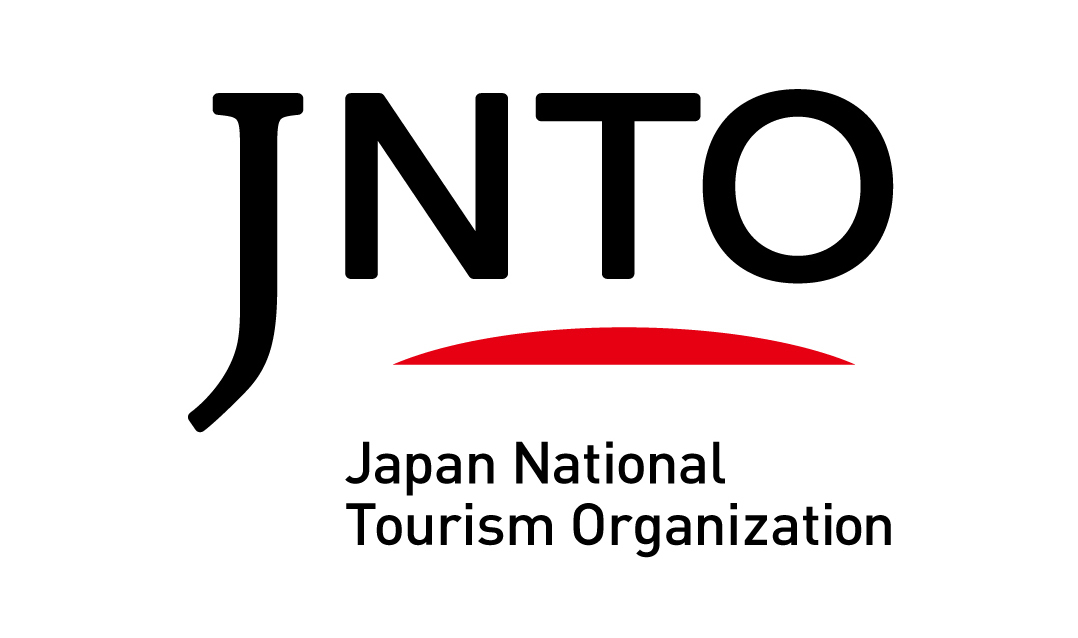|
JNTO CANADA NEWSLETTER - FEBRUARY 2023
|
|
|---|
|
Photo: © iStock /
ablokhin |
|
|---|
|
|
Japan offers Canadian travellers the best of both worlds: a safe and welcoming destination with familiar Western comforts, but with a unique culture that can’t be found anywhere else. This distinctive quality is why Japanese destinations have made it onto many “top places to travel to” lists this year, including those from
Travel + Leisure,
CN Traveler, Lonely Planet, and the
New York Times. From quirky festivals to unusual accommodation options, art attractions offering a unique sense of place, and distinctively Japanese customs and traditions, a visit to Japan offers plenty of highlights that are definitely particular to this destination.
|
|
|---|
|
|
FESTIVALS THAT ARE UNMISTAKABLY JAPANESE
Japan’s cultural calendar is filled with festivals and events that serve as an excellent centrepiece to a visit to the country. Festivals (or
matsuri in Japanese) range from the cherry blossom festivals that happen throughout the country to those that are specific to one region or town, from those that celebrate history to the distinctly modern. But some of the most fascinating events are those that are uniquely Japanese; those that you wouldn’t find anywhere else.
The Hokkai Heso Matsuri, held at the end of July in Furano City, Hokkaido, celebrates the city’s identity as Hokkaido’s
heso (belly button). Participants paint faces on their naked bellies before dancing and parading through the streets, and spectators can also enjoy belly button-inspired street food. At an
akutai matsuri (swearing festival), held in several places in the country, 13 Shinto priests dress as
tengu (a legendary mountain goblin) and trek between shrines as locals shout insults at them. The festivals are held around the end of December, and are believed to bring good luck to participants as they enter the new year.
Finally, according to Japanese folklore, a crying baby can ward off evil spirits, and
naki sumo festivals around the country celebrate this with a competition where sumo wrestlers cradle babies, with the first to cry proclaimed the winner.
While some festivals are really just for locals, there are plenty that respectful visitors can join! To prepare, research the festival you’re interested in, pay attention to local rules, and don’t expect the community to serve you - you’re a spectator to Japanese culture. Keep an open mind, engage with the locals and don’t be afraid to ask questions!
|
|
|---|
|
DISTINCTIVE ACCOMMODATIONS
Whatever the budget, there’s no shortage of hotels, inns and resorts for travellers to lay down their heads after a full day of exploration. But for those looking for uniquely Japanese accommodation, some distinctive offerings give travellers the chance to experience a stay that they are unlikely to find anywhere else in the world. A stay in a traditional Japanese inn, a
ryokan, is more than just accommodation - it’s a cultural experience. While ryokan can range from tiny rural retreats to thoroughly modern facilities, there are a few things they tend to have in common:
tatami mat flooring and
futon bedding, private baths,
yukata robes, multi-course
kaiseki dinners, and traditional Japanese breakfasts.
Another unique option is glamping - where “glamour” meets “camping” - which has risen in popularity in Japan in recent years and offers a luxury experience in the great outdoors. Accommodations can include well-appointed tents, yurts, domes, trailers and other imaginative spaces, fully-furnished without the need for travellers to tote their own sleeping bags or tents. Some, like Hoshinoya Fuji, offer modern minimalist cabins and activities like learning to smoke your own food and aerial stretching in the forest. Others, like Field Suite Hakuba Kitaone Kogen feature luxury tents on the top of a mountain, with canoe picnics and outdoor massages available.
While other countries now offer capsule hotels, they originated in Japan as a budget-friendly option for commuting workers who missed the last train home. For those on vacation, they can make a quirky, great value option that’s very convenient as well. At its most basic, a hotel “pod” is the size of a single mattress, often stacked two or three-high, with a curtain at the open end. But more modern, deluxe options have entered the market, including the futuristic Nine Hours chain, the luxury Anshin Oyado with onsite
onsens (hot springs), and The Millennials brand with its included coworking spaces.
|
|
|---|
|
Photo: © MA Yansong / MAD Architects |
|
|---|
|
ART ATTRACTIONS THAT ARE UNIQUELY JAPANESE
Though many of Japan’s art galleries and cultural attractions would be at home in any modern setting, there are also plenty that show a unique side to Japan’s history, traditions and society.
Manga and
anime are both illustrated artforms pioneered in Japan (
manga refers to static comics, while
anime is short for “animation”), and characters and franchises such as
Pokemon,
Astro Boy and
My Neighbor Totoro are well known around the world. Studio Ghibli is the name behind many popular anime movies, making the newly-opened Ghibli Park a must-visit for fans visiting Japan. Located in a forest in Aichi, on the outskirts of Nagoya, there are no rides at Ghibli Park - instead, you stroll among the trees, discovering buildings and architecture that you have seen in the studio’s movies, as well as visiting the Grand Warehouse packed with exhibits and a screening room.
Another unarguably Japanese cultural attraction - albeit in a very different way - is the Nima Sand Museum, inspired by the “singing sands” of Kotogahama Beach (it makes a squeaking sound similar to a harp as you walk on it). The museum consists of six glass pyramids designed by renowned Japanese architect Shin Takamatsu, and includes a “yearglass” (as opposed to an hourglass), that is turned upside down each December 31 to countdown the next year.
Combining culture and geographic place, a trio of cities are mounting art triennales in 2023. In the port city of Yokohama, the contemporary art exhibited as part of the triennale looks at both the relationship between Japan and the rest of the world, but also between society and individuals. In Saitama - a short train ride from Tokyo, the city’s triennale is strongly focused on Saitama culture and explores the theme “We”. Suzu City in Ishikawa is sometimes described as being where the “forgotten Japan” can still be found, and the city’s Oku-Noto Triennale aims to bridge this gap. Works are located around the city and include installations, performance, and anything from cooking to fashion to handicrafts.
|
|
|---|
|
Photo: © iStock /
oluolu3 |
|
|---|
|
JAPANESE ETIQUETTE AND CULTURAL TIPS
When travelling anywhere, common sense and politeness go a long way when you’re unsure about local customs and etiquette. To avoid any uncomfortable situations and to get the most out of your trip, it’s recommended that travellers do a little research on the customs and manners of the place they’re visiting before leaving home. For instance, when eating out in Japan, never pass food from your chopsticks to another person’s chopsticks, or leave your chopsticks sticking up in a bowl of rice. You can slurp your noodles and eat sushi with your fingers, but don’t pour your own drink or eat directly from the communal platter. And at the end of the meal, you don’t need to leave a tip.
If you’re staying in a traditional
ryokan, you’ll need to take off your shoes before heading inside, and will sleep on a
futon on the floor. Make sure you heed the house rules on whether you can wear your
yukata robe and slippers outside or not, and whether dinner will be served in your room or a communal dining area. If you’re heading to a public
onsen, be aware that many will require you to cover any tattoos on your body. Wash thoroughly before you enter the hot spring (or public bath), and tie back your hair if it’s long.
And in all cases, if you’re unsure or what’s appropriate, just ask a local!
|
|
|---|
|
Photo: © Hotel Okura Tokyo |
|
|---|
|
THE OKURA TOKYO, TRUE JAPANESE HOSPITALITY
Originally opened in 1962, Hotel Okura Tokyo was created as a truly Japanese hotel with elegance and comfort to equal the world’s best luxury hotels. Reconstructed and re-opened in September 2019, The Okura Tokyo remains Okura Group’s flagship luxury brand hotel, and is recognized as a five-star hotel in Forbes Travel Guide’s 2023 Star Awards.
The hotel consists of two buildings: The Okura Heritage Wing, a 17-story tower enveloped in an air of elegance and tranquillity, and The Okura Prestige Tower, a 41-story tower that meets modern-day needs for dynamism and functionality while also maintaining a uniquely Japanese nuance. There are a total of 508 guestrooms in the hotel, and it is home to five restaurants offering a range of Japanese cuisine, including "Yamazato", fine Japanese dining, and "Sazanka", serving teppanyaki with a breathtaking view of the city from 190m above the ground. Additionally, there are two bars, a tea ceremony room, 19 banquet rooms including the Heian Room (with an approximate area of 2,000 m2), and the Okura Fitness & Spa facility.
During your trip to Japan, consider a stay at The Okura Heritage Wing, where serenity and elegance envelop every room, and your stay is enhanced by attentive hospitality including concierge services that go deeper than a superficial luxury. Each room is equipped with a steam sauna and an air bubble bath, and some rooms have a balcony overlooking the gardens, enabling guests to fully enjoy the flora of each passing season.
|
|
|---|
|
UPDATED TRAVEL INFORMATION
For the most up-to-date information on travel to Japan, we encourage you to visit our COVID-19: Practical Information for Traveling to Japan page. Learn more about Japan’s current reopening status, procedures for before and after your arrival, and travel and safety tips during your stay.
|
|
|---|
|
|
|
|
|  |
|
|
|
|


